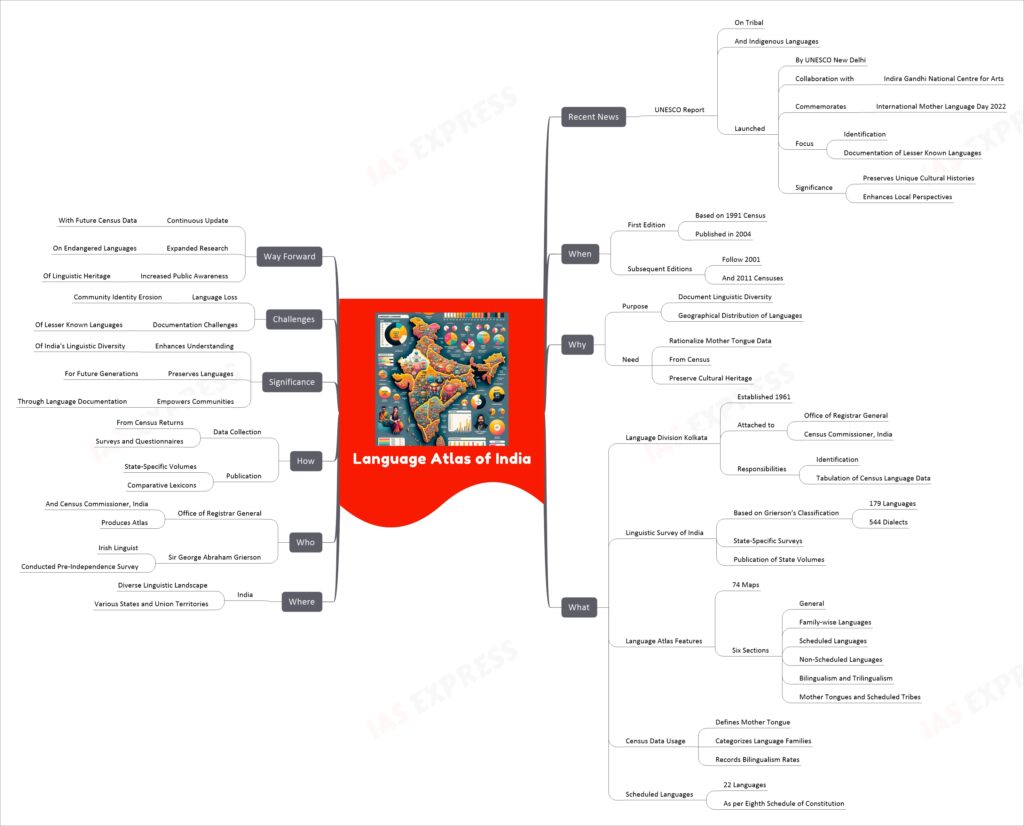Language Atlas of India

The Language Atlas of India is a comprehensive resource that maps the linguistic diversity of India based on census data. It was first published in 2004 using 1991 census data, with subsequent editions following later censuses. The atlas, produced by the Office of the Registrar General & Census Commissioner, India, documents languages and dialects across India, categorizing them into various language families and recording rates of bilingualism. Recent efforts, like the UNESCO report on tribal and indigenous languages, emphasize the significance of documenting and preserving linguistic diversity. The atlas serves as a vital tool for understanding India’s rich linguistic heritage, highlighting the importance of language in cultural identity and community empowerment.
If you like this post, please share your feedback in the comments section below so that we will upload more posts like this.

